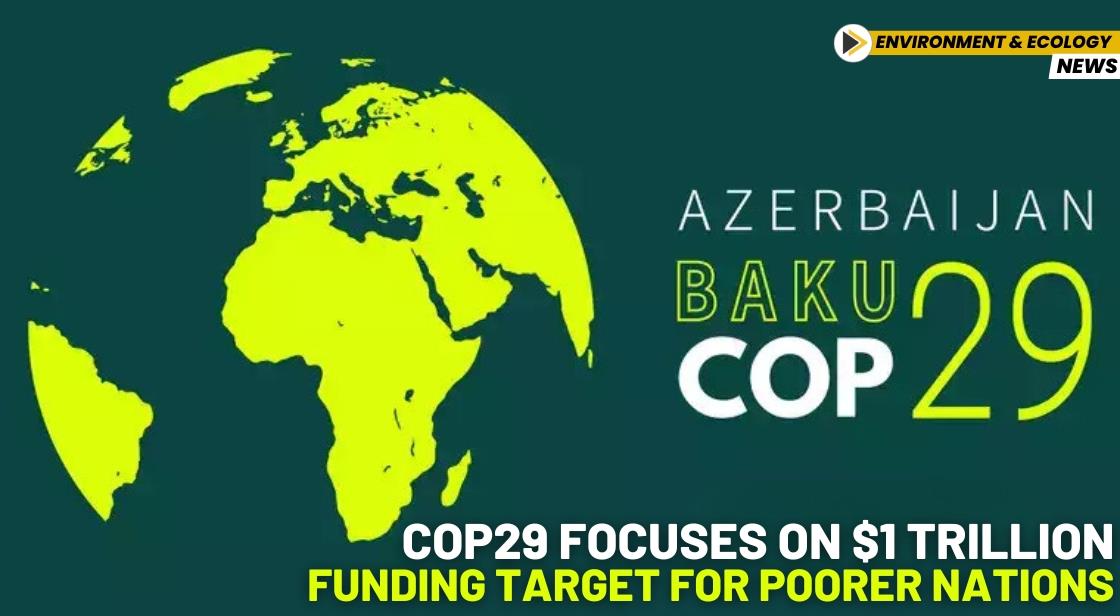COP29 Focuses on $1 Trillion Funding Target for Poorer Nations

News Synopsis
World leaders and climate negotiators have been warned to act decisively now or risk incurring significantly higher costs later as climate change impacts worsen. Experts estimate that poorer countries will require at least $1 trillion annually by the end of this decade to transition to greener energy systems and safeguard against extreme weather events.
Key Focus of COP29: Climate Finance for Developing Nations
The ongoing COP29 climate summit in Azerbaijan has centered on the crucial issue of climate financing. A major indicator of the summit's success will be whether nations can establish a new financial target for richer countries, multilateral development lenders, and private entities to assist developing nations.
The previous commitment of $100 billion per year, set during the 2009 Copenhagen climate talks, was only achieved in 2022, two years later than planned, according to the OECD. Moreover, most of this funding came in the form of loans rather than grants—a practice that recipient nations have criticized, calling for a shift toward more grant-based financing.
Rising Financial Needs
A report from the Independent High-Level Expert Group on Climate Finance presented a stark warning, projecting that the target annual figure must rise to $1.3 trillion by 2035. The report emphasized the risks of delaying investments, stating:
"Any shortfall in investment before 2030 will place added pressure on the years that follow, creating a steeper and potentially more costly path to climate stability."
It further cautioned, “The less the world achieves now, the more we will need to invest later.”
Challenges in Reaching Consensus
Behind closed doors, negotiators are struggling to craft a draft agreement, with early-stage documents reflecting divergent views. Many are awaiting a streamlined text to advance discussions.
A key obstacle remains the reluctance of Western nations to commit additional funding unless countries like China also join the effort. The potential withdrawal of the United States from any future climate financing deal, following incoming President Donald Trump's stance, has added further pressure on negotiators to explore alternative solutions.
Exploring New Funding Sources
To address the funding gap, there is growing momentum to impose taxes on polluting industries, including aviation, fossil fuels, and shipping, as well as financial transactions. However, any formal agreement on such measures is unlikely during the current summit.
Multilateral development banks, including the World Bank, are also undergoing reforms to enhance their lending capabilities. Ten of the largest banks have announced plans to increase their annual climate financing by approximately 60%, reaching $120 billion by 2030, with an additional $65 billion expected from private sector contributions.
Regional Commitments and Tensions
In a notable development, Zakir Nuriyev, head of the Association of Banks of Azerbaijan, pledged $1.2 billion from the country’s 22 banks to support Azerbaijan's transition to a low-carbon economy.
Meanwhile, geopolitical tensions have occasionally overshadowed the discussions. French climate minister Agnès Pannier-Runacher canceled her trip to COP29 after Azerbaijan’s President Ilham Aliyev accused France of historical “crimes” in its overseas territories. The European Union climate commissioner Wopke Hoekstra called for maintaining the focus on climate action despite bilateral disputes.
Argentina also withdrew its delegation from the talks, reportedly on the orders of President Javier Milei, who has controversially referred to global warming as a "hoax."
Conclusion: A Defining Moment for Climate Finance
The COP29 summit has underscored the pressing need for substantial and equitable climate financing. With a projected $1 trillion annual requirement by 2030 and $1.3 trillion by 2035, the stakes are higher than ever. Addressing this challenge will require innovative financing mechanisms, collective political will, and meaningful cooperation between developed and developing nations. As the summit progresses, the world watches closely, hoping for tangible commitments to ensure a sustainable and equitable future for all.
You May Like









